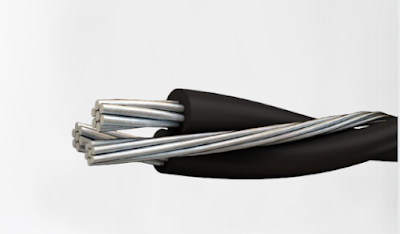Understanding Triplex Cable: A Comprehensive Guide
 |
| Triplex cable |
Triplex cable, also known as Zenergy cable, is a fundamental component in electrical systems, offering versatility and efficiency in various applications. Understanding its construction, benefits, and applications is crucial for anyone involved in electrical engineering or related fields.
What is Triplex Cable?
Triplex cable is a type of electrical cable consisting of three insulated conductors bundled together. These conductors are typically made of copper or aluminum and are insulated with materials such as PVC or XLPE (cross-linked polyethylene) for protection against environmental factors and electrical interference.Construction of Triplex Cable
The construction of triplex cable involves several layers designed to ensure durability and efficient transmission of electricity. The core components include:- Conductors: The conductors form the core of the cable and carry the electrical current. Copper and aluminum are commonly used due to their excellent conductivity and cost-effectiveness.
- Insulation: Each conductor is insulated with materials such as PVC or XLPE to prevent electrical leakage and protect against environmental factors like moisture and abrasion.
- Neutral Messenger: In addition to the three insulated conductors, triplex cable often includes a neutral messenger wire, typically made of aluminum or steel. This wire provides support and balance to the cable, especially in overhead installations.
- Jacketing: The entire cable assembly is enclosed in a protective jacket, which provides additional insulation and mechanical protection against external elements.
Benefits of Triplex Cable
Triplex cable offers several advantages over traditional electrical wiring systems:- Space Efficiency: The compact design of triplex cable allows for efficient use of space, making it ideal for installations where space is limited.
- Cost Effectiveness: Compared to individual conductors, triplex cable reduces material and installation costs by combining multiple conductors into a single assembly.
- Durability: The robust construction of triplex cable ensures long-term reliability, even in harsh environments.
- Ease of Installation: The bundled design of triplex cable simplifies installation, reducing labor time and associated costs.
Applications of Triplex Cable
Triplex cable finds applications in various industries and settings, including:- Residential Wiring: Triplex cable is commonly used for residential electrical wiring, particularly in overhead service entrances and distribution lines.
- Commercial Buildings: In commercial buildings, triplex cable is utilized for power distribution, lighting, and other electrical systems.
- Industrial Facilities: Industrial applications often require durable and reliable electrical wiring, making triplex cable an ideal choice for powering machinery and equipment.
- Renewable Energy: Triplex cable plays a vital role in renewable energy systems, such as solar and wind farms, where it is used to connect power sources to the grid.


Comments
Post a Comment